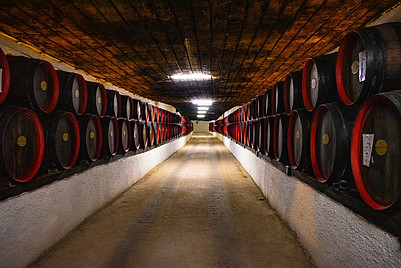Commercial wine making equipment can be divided into three parts: grape takeover, winery, and bottling. Let’s review them briefly.
Production in modern wine cellars must be technologically sophisticated if winemakers want the enormous quantities of wine they produce to be of superior quality. State-of-the-art technologies provide consistent quality and cost-effectiveness year after year, saving primarily on energy, time, and labor.
Commercial wine cellar equipment can be easily divided into three parts: grape takeover, the cellar itself, and the bottler. First, the grapes should be a takeover and squeezed. The meter and the sampler examine the quality of the grapes, which then go into the collection trays, where the grape crusher destemmer separates the stalks and squeezes the berries. The resulting broth, nothing attractive to look at, is then pumped through the pipelines into vīnifer or presses. Here is the difference in the production of red and white wine. “The red grapes are macerated, which means that they are left with berries, from which color, phenolic substances are released … and white goes straight into the press. A vīnifer is actually a tank in which the maceration of red varieties is triggered. In the cellar, of course, the storage of wine is crucial. These are tanks that can be equipped with cooling systems and mixers, as well as wooden barrels and various aids needed for wine aging processes, such as sulfur dispensers and various filters.
Filling as in Conveyor Belt
The modern bottling plant is virtually automated. The filling line is designed so that the bottles travel along the conveyor belt smoothly from the flusher, which sterilizes them, then the filler fills them up; with a capsule machine, they get a headband, that is, a cap on the top. Filled bottles travel to the label that affixes the labels to them … The times when workers with labeled bottles were stacked in cartons and glued cartons on pallets are irrevocably past in the modern basement. All this is done by the machines: the cardboard maker assembles the cartons, folds the bottles inside the cartons, palletizes them onto pallets, and wraps the wrapper in stable packages. “It is very important for us to hand over not only quality wine, but it must also be decently equipped and tidy.
In addition to quality, modern technology also guarantees a reduction in production costs. “Four people can do the work in the basement, which once occupied 12 people. Even more obvious is the takeover of grapes, where we previously needed 60 workers, but today with 10 machines, the process is controlled by hardware. In any case, this means extremely large savings, but also saving energy and especially time.
Planning Commercial Wine Making Equipment Is a Holistic Process
Designing a system like a large-capacity wine cellar is certainly not an easy business. If it is not enough experts in your country to create the cellar, then the oenologists can do this, and of course, with the help of technically savvy staff, too. Of course, it is crucial that we keep up with the latest professional literature and presentations by global equipment manufacturers.
They purchase the equipment directly from the manufacturers unless they have exclusive representatives for a particular area. There are virtually no brokers for large cellars in many countries.
Because each basement has its own characteristics, depending, for example, on the terrain where they stand – some underground, others above it – it is also impossible to design a universal design project. Each basement is such a unique project; let’s say that they are usually renovated gradually. We could say that technology is constantly being upgraded. It is continuously being revamped, and we cannot afford to fall behind modern guidelines.”
